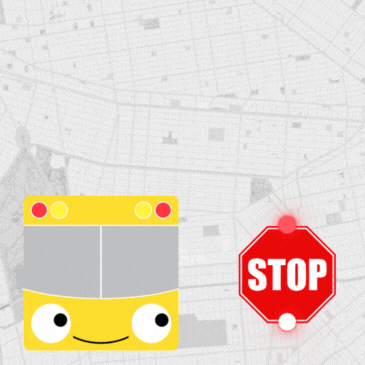
When the Glow Wears Off: The Silent Strength of Presence in the Classroom
by Chana Kaiman, LCSW-RPT – Board Member of Bereishis Foundation inc.
When the Glow Wears Off
The energy in the classroom after Yom Tov is almost tangible. The children return with stories, song, and the lingering light of the holidays. Teachers feel that spark too, a renewed sense of shlichus, of purpose in shaping minds and hearts.
But as the routine settles in, the sparkle fades. The whispering begins, the pencils roll off desks, and the teacher’s voice climbs just a little higher. The calm of Tishrei feels like a distant dream.
This moment, when the newness wears off and the avodah begins, is the true test of leadership. Because education, like avodas Hashem, isn’t sustained by inspiration. It’s sustained by presence.
Chabad Chassidus teaches that the goal of life is not to escape the world’s noise, but to reveal G-dliness within it. The classroom, too, becomes a miniature Beis HaMikdash, where each interaction can reflect Hashem’s presence when guided by awareness, regulation, and compassion.
The Sound of Presence
When a teacher lowers her voice instead of raising it, she is not “giving in.” She is drawing down. The Alter Rebbe explains that malchus; true authority is not about control, but about calm influence. It is the quiet power that receives, contains, and directs. When we respond with measured tone and steady posture, we align with malchus d’kedushah, authority infused with humility.
Children’s nervous systems are wired to detect safety. When we shout, even from frustration, we activate their nefesh habehamis, the instinctive part that braces for threat. When we soften, we awaken their nefesh Elokis; the soul that longs for connection.
A calm teacher becomes a keili for the Shechinah. Her tone says, “You are safe with me.” Her presence teaches more than her words ever could.
Regulating Before Responding
Chassidus teaches moach shalit al halev; the mind rules over the heart. This principle is not only spiritual; it’s profoundly physiological. When a teacher regulates her own nervous system, through breathing, grounding, or pausing, she brings her mochin d’gadlus (expanded consciousness) online. In that space of calm, she can see the child not as a “behavior,” but as a soul struggling to stay balanced. The teacher’s inner stillness becomes the student’s external safety. This is hisbonenus in action, contemplation that precedes response.
Before speaking, she connects inwardly: What is really happening here? That pause transforms reaction into avodah. It turns correction into connection.
Reflection Over Reaction
Chassidus emphasizes Ahavas Yisrael that transcends circumstance, a love for the etzem haneshamah, the essential Divine spark within each person. The Rebbe taught that when a teacher truly sees the pnimiyus of a child, she elicits that goodness into expression. Instead of focusing on what went wrong, the teacher can reflect what is right: “I noticed you tried again.” “You calmed yourself down, that took strength.”
This reflective language mirrors the Divine gaze: Hashem’s constant belief in our potential. In Chassidus, this is Ohr Makif; surrounding light, the gentle awareness that encourages growth without judgment.
When we speak to the soul instead of the behavior, we invite the child to meet us at that level.
The Teacher as a Channel of Daas
The Alter Rebbe describes daas as the bridge between intellect and emotion, the power to internalize knowledge until it transforms feeling and action.
A teacher grounded in daas doesn’t just know how to manage a class; she embodies it. Her students learn regulation not from lessons, but from her presence. She teaches through her calm tone, her patient eyes, her steady rhythm.
In that moment, she becomes a channel for G-dly awareness. Her stillness is not passive, it’s potent. It’s bitul b’metzius; self-transcendence that allows Divine wisdom to flow through her.
Silence as Spiritual Strength
Chazal teaches, “Lo matzasi laguf tov ela shtikah”, nothing is as beneficial for the body as silence. In Chassidus, silence is not emptiness but receptivity, the vessel that allows higher light to enter.
When a teacher responds softly, she creates makom panui, inner space. The Rebbe Rashab described menuchas hanefesh as the essential foundation for all spiritual and emotional growth, a settled soul from which insight and empathy emerge. In that silence, children feel seen. Their nervous systems settle. Their neshamos can breathe.
From Inspiration to Integration
After the Yomim Tovim, the soul’s work is to bring holiness into ordinary time, to make Cheshvan as meaningful as Tishrei. The same is true in the classroom. When the excitement fades, what remains is the quiet avodah of consistency. True chinuch happens not in the moments of inspiration, but in the gentle, repetitive acts of presence; a calm tone, a grounded breath, a smile that says, “You are safe and capable.” This is what Chassidus calls dirah b’tachtonim; making a dwelling place for Hashem in the most ordinary places, even in a classroom full of squirming children. When we bring calm awareness into those moments, we reveal G-dliness right there.
Practical Takeaways: Bringing Chassidus into Classroom Management
1. Pause Before Responding
Before addressing misbehavior, take one mindful breath. In that pause, you activate moach shalit al halev; mind over emotion. It’s not avoidance; it’s leadership from centeredness.
2. Lower, Don’t Raise
When voices rise, nervous systems brace for threat. A lowered voice, slower pace, and softer tone signal safety. This is malchus d’kedushah, influence through calm authority.
3. Anchor with the Body
Plant both feet, relax shoulders, and let your breath guide your voice. Physical regulation anchors spiritual menuchas hanefesh. A regulated body supports a settled soul.
4. Reflect Effort, Not Error
Instead of pointing out what’s wrong, acknowledge what’s working: “I see you trying again.” “You waited your turn, that took effort.” This mirrors the Chassidic idea of seeing the etzem haneshamah; the essence of goodness within each Child.
5. Create a Calm Corner
A small space with soft textures, quiet visuals, and grounding tools (a stress ball, a picture of Yerushalayim, a comforting pasuk) helps children self- regulate. Teach that returning to calm is hisbonenus, not punishment.
6. Model Inner Stillness
Don’t just teach self-control; be it. Let your bitul, your humility and quiet strength, model what regulation looks like. Children borrow your nervous system before they find their own balance.
7. Bring Torah into Transitions
Use short, soothing reminders: “Let’s take a deep breath and remember, Hashem gives us koach.” “We’re moving from recess to learning; let’s bring our calm with us.” These micro-moments of daas connect the spiritual and the sensory.
8. End the Day with Connection
A two-minute check-in circle, gratitude moment, or niggun shel menuchah calms collective energy. It mirrors the Chassidic idea of Ohr Chozer; returning light that refines and integrates the day’s experiences.
9. See Behavior as Communication
Every “misbehavior” is a form of communication: fatigue, anxiety, hunger, or sensory overload. The Chassidic approach asks: What does this neshamah need right now? Respond to the need, not the noise.
10. Sanctify the Ordinary
The Rebbe taught that holiness lives within routine. The calm tone, the smile, the gentle correction; these small, steady acts of presence create a dirah b’tachtonim right in your classroom.
About the Author
Chana Kaiman, LCSW-RPT
Founder of Empowerment Insight | Board Member of Bereishis Foundation Inc.
Licensed clinical social worker and registered play therapist specializing in integrating Chabad Chassidus, Torah values, and neurodevelopmental principles in education and therapy. She provides consultation, supervision, and training to educators and clinicians nationwide.
Phone: 203-400-3197
Email: chanakaiman@gmail.com

















Very powerful
A lot of people dont view life this way otherwise the world would be a whole lot different but I recognize it and apply accordingly. Thanks for sharing.
Love This
I don’t usually like to read but I was blown away by this, thanks!!!